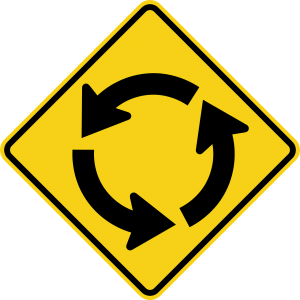Leverage Customer Voice into “Explosive Sales Growth”
Understanding your customers and markets today is the first step in business development plans that result in explosive sales growth. In my last post, I shared an example of one company that took the time to understand its market and doubled its sales in 18 months. In this post, I will share the same process and how critical it is to understand who your real customer is.
After the plastics company in the last post was sold to a private equity firm for a multiple much higher than industry averages I needed to find a new team to serve.
A company contacted me: Vantage Mobility. This company manufactures vans with the floors lowered so consumers in wheelchairs can drive again. This was one of my favorite jobs because we were changing lives with each sale.
When I met with their owners I heard common pains they wanted to be solved:
- Increased distribution
- Increase sales
- Increase market share
- Improve bottom line
After joining the team as the VP of Sales and Marketing I set out to use the same process that helped Alpha Enterprises realize explosive sales growth:
Go out into the market and meet customers
Listen for problems that needed solving
Understand how they buy today
What they need to buy today
Then shape a sales process that mirrors what we learned, train and coach the sales team on how to use it
The leadership team said their customers were independent mobility dealers who bought their vehicles then sold them to consumers in wheelchairs. What I heard was: mobility dealers were their channel distribution partners but the customers are consumers in wheelchairs. This led to some … let’s say lively discussions with the new guy “who obviously did not understand the dealer is the customer because they send us checks!”
My first objective was to add distribution in markets we were not adequately represented. I conducted a number of four-legged sales calls with my regional sales managers calling on our independent dealer distributors and the dealers we wanted to add. While my regional managers were focused on hitting their sales numbers (as they should) I asked open-ended questions to learn more about their business, how they buy, what they buy, and why today. They openly shared why they bought from the 800 lb gorilla competitor: Braun. Braun pretty much invented this industry. Their founder set out to solve a problem: help consumers in wheelchairs drive again. Because he was in a wheelchair himself, he intimately understood the needs of consumers in wheelchairs.
One of the questions I always use that produce great feedback is:
What does our competitor do really well?
This will produce items that are important to your buyers and key criteria they consider when picking a vendor. What buyers often expect is a competing salesperson talking about how the competitor sucks. (We had a few regional managers who used this approach and that was quickly changed). What salespeople must understand is when you use the approach of “the competition sucks” you are basically telling the buyer there is a fool for the buying decisions they make and really do not know how to do their job. Once this occurs the opportunity to build a relationship with the buyer is over. Once this occurs the opportunity to learn what is important to the buyer and how they buy is over.
Another question I always use is:
If you were the president of our company, what would you do?
In this case, you are doing the opposite of challenging the buyers’ past purchase decisions. You are basically saying…you have been in this business for a while, you are smart, I respect you and I really would like to hear your thoughts because I believe they will help me…
After about three months we gathered all the information, grouped it and we prioritized it, and offered what we heard the independent dealers wanted and needed. We trained our regional managers on how to present our offerings. I worked in the field with our salespeople making sure they adapted to this new behavior and coached them when they struggled. Our number of distributors increased. This led to increased sales and an improved bottom line.
However, to solve the companies next three pain points we really needed to understand the true customers: consumers in wheelchairs. (In tech markets we refer to them as end-users)
- Increase sales
- Increase market share
- Improve bottom line
I continued the four-legged sales calls with our regional managers and coaching but changed my focus. Every mobility dealer sold accessible vans. They also provided amazing service for those vehicles and additional products to make the vehicle overall use experience the best it could be. They added innovative products like hand controls and transfer seats as well as conducted routine maintenance. While our regional managers were calling on mobility dealer owners and helping their salespeople demonstrate vehicles, I sat in the lobby and talked to consumers in wheelchairs. I was amazed how little I knew, how little my regional managers knew, about consumers in wheelchairs and how they made buying decisions and the process they went through. They shared things like:
- On average consumers in wheelchairs make about 25% less than those not in wheelchairs and have less disposable income due to medications and medical devices. “It’s hard for us to get new car loans, and these custom vehicles are expensive“
- The vehicle’s reputation for quality is critical. Specifically, their fear was that should their vehicle break down, the tow truck driver can town their vehicle, but no tow trucks are equipped to transport a consumer in a wheelchair so they could be left in their wheelchair on the side of the road.
- The closest relationships they have at mobility dealers are with the people who service their vehicles. “If Frank tells me brand X is the best because they rarely come in for service then that’s what I buy.”
- How vehicle presentations at their home are so valuable for first-time mobility vehicle buyers (they may not have any way of getting to the dealer after their recent operation or accident)
- One young lady said something that I did not expect: You think consumers in wheelchairs are ugly! What? Your brochure, your website all uses models who are obviously not people in wheelchairs…I can tell by this woman’s muscle tone in her thighs or this guy here the muscle tone in his legs and the bottom of his shoes are scuffed. (Never expected that concern)
- We learned that all consumers in wheelchairs were not the same. We had four prominent buyer personas: Quadriplegics, paraplegics, some but limited mobility, and caregivers. Each had his or her unique criteria and requirements when purchasing a mobility vehicle or device.
- My favorite comment came from a veteran who has had his vehicle serviced at our Akron Ohio dealer’s location: “You folks are not that smart you know? These vehicles are so very expensive when you buy a new van then convert it. If I were you I would buy as many used vans as I could and modify them and bring down the retail price so more people who need what you are selling can afford one…” ( as the new guy why wouldn’t we do this?)
- We learned a number of our dealer salespeople came from the automotive sales industry and the strategies and tactics they were taught there not only did not work but caused consumers to leave the mobility dealerships. The mobility vehicle sale is a custom solution sale not selling numbers or as one referred to it as “moving iron”. This sale is about serving people with a life-changing solution.
We brought all the current market data we gathered back to the owners, board, and executive team. This is the hardest part of my process because I am often seen as a heretic, not loyal, telling them their baby is ugly, or I just don’t get the vision, you obviously don’t know how we have been doing things around here for the past ___years. (Well if what you have been doing was driving the sales growth you needed you wouldn’t have hired me? ..never said out loud)
Over time we made some adjustments based on what we learned:
- We used actual VMI customers in our photoshoots creating an authentic connection in the community in our brochures, marketing, and website
- Our tech services group dug deep into the most common service issues and solved them with engineering’s help, and our dealer’s field tech teams became raving fans
- We proactively offered in-home demonstrations when we learned it was a first-time buyer
- We taught our dealers to proactively reach out to every past customer right before their vehicle warrantee was about to expire because consumers valued having the warrantee so much, and it created an inventory of used vans
- We changed our website. The first step when you entered our site was to identify what buyer persona you were and we took you through products that met your needs and requirements.
- We started buying fleets of used vans from rental companies and converting them driving down the retail price and binging an entirely new set of buyers into our dealers
- Our dealer tech training did an amazing job and won the hearts and minds of dealer service technicians, one of the leading influencers for consumers in wheelchairs buying their next vehicle
- We created and trained our dealers in a new way to help consumers in wheelchairs buy mobility vehicles. It was called the Certified Mobility Consultant program and it is still in use today
Vantage Mobility experienced “explosive sales growth “after tuning in to their distributor partner’s needs and the unique needs of their top buyer personas. We stopped focusing on what the 800 lb gorilla competitor was doing and we started tracking “lives changed” instead of vehicles sold.
Today VMI is seen as a high-quality conversion van manufacturer and key partner with their dealers. Used van conversions grew to over 60% of the vehicles sold within five years. Because they are a privately held company when I served them ( recently sold at a strong multiple ) I cannot share the specific sales and profits, but I can share their sales today are estimated at 9X-10X the sales they had in 2000. They continued to listen to their dealers and consumers and converted new vehicles like Hondas and Toyotas.
How about your company?
Are you actively listening to your channel partners AND customers?
Are you counting on your distributors to share customer feedback with you? Or is someone on your team asking?
When was the last time you asked one of your customers what your competitor is doing right?
Is your team experiencing explosive sales growth? Would you like to?
What do your customers need to buy today and what process, what journey are they using to make buying decisions today?
Are you interested in 9X or 10X sales growth?
Once your team understands your buyers and sometimes channel partners, what they need to buy, and how they buy you can leverage this into an explosive sales growth business development plan like VMI executed.
There is a power in the voice of your customers, voice of your markets, leverage it!
A number of companies tell me they know their customers, we have been serving them for 20 years….you might but don’t you want to be sure?
OK, let me ask you a question: When you buy something today, has the journey you take to the sale changed in the last 10 years? Are there new criteria important to you today that might not have been on your list 20 years ago? The reason why your business exists today is you intimately knew your buyers, how they buy, and what they needed to buy back then. Just as you now may use the Internet today to do research before you buy something today, so too are your customers. I am not trying to be a Heretic, I am working hard to serve your company and help you grow profitably!
Once we leverage the voice of the market today you will experience explosive sales growth!







